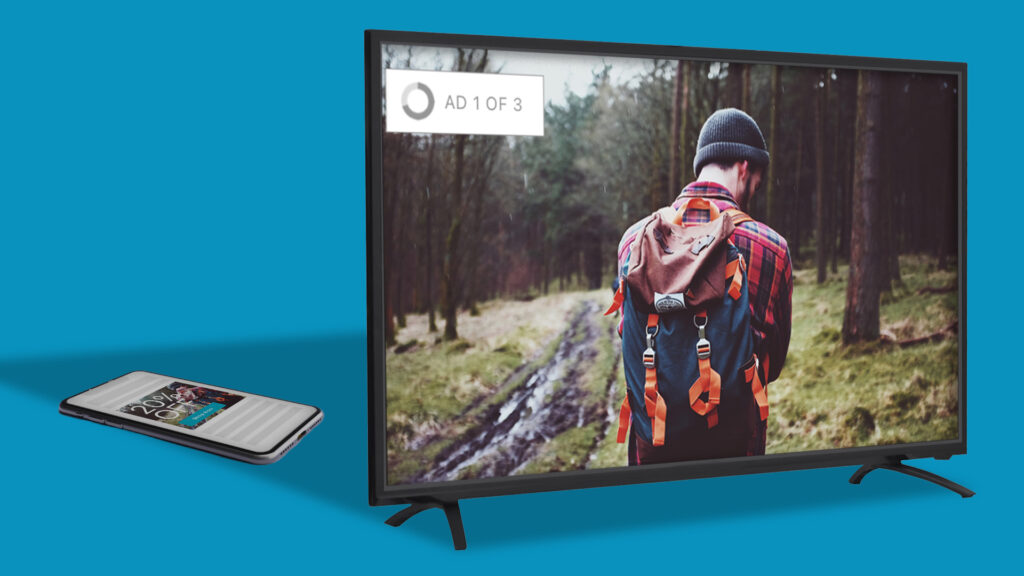From the MNTN Slack: What Netflix’s Q1 Report Signals About the Future of Streaming
by Cat Hausler
8 Min Read
CES 2024: Stagwell (STGW) and MNTN Announce Partnership in Unified Performance SolutionsLearn More
And Twitter’s Woes Have Them Rethinking Their Q4 Plans

5 Min Read
Mobile and social media advertising used to be a one-two punch for advertisers. When both avenues arrived on the scene, they offered something unique that no other ad channel had: the ability to target specific audiences, measure campaign performance, and always reach the consumer—as most people always have their mobile device on hand.
But advertising and technology don’t rest, and what was once revolutionary often paves way for what’s next. While brands should—and are—keeping social and mobile advertising in their omnichannel marketing mix, many have turned their attention to the next performance platform that builds on—and in many ways, supersedes—what came before: Connected TV.
A recent AppsFlyer survey report, Connected TV Trends, 2022-23, found that brands and advertisers continue to get more bullish regarding CTV. AppsFlyer surveyed 500 CTV viewers between the ages of 26-50, along with 200 director/C-suite employees from marketing departments. Some of the key findings from the report:
These numbers show a marked improvement over previous polls and show that Connected TV’s prominence in the advertising and entertainment landscape continues to gain mindshare with both brands and viewers. The gaining popularity of CTV ads likely comes to three factors:
While mobile might be losing ground to CTV in the minds of advertisers, that’s not keeping it from leveraging the power of the platform—and partnering with streaming services. T-Mobile recently partnered with Roku for their first 360 activation, an idea that would have been unfathomable just a few years ago. The companies are teaming up for Roku’s upcoming original, Weird: The Al Yankovic Story, with activation both on- and off-platform. Planned elements include a fan experience on Roku, tagged vignettes with star Weird Al, and T-Mobile sponsorship for the film’s live premiere.
Most notably, T-Mobile is relying on Roku to measure brand awareness and other KPIs that the mobile carrier may be interested in—a telling indicator of where CTV sits in the hierarchy of advertising channels. No longer an unproven disruptor, Connected TV has solidified its value and validated itself as a platform that both attracts the interest of its mobile forebearers—and sees its robust measurement being utilized by them.
Meanwhile, social media is going through a shakeup of its own as brands both reevaluate the platforms and their budgets. We’ve previously talked about paid social being the second largest ad bucket seeing its dollar reallocated to CTV. But now, Meta’s recent stock stumbles and Twitter’s leadership from Elon Musk is giving advertisers—and their campaigns—pause. Citing the need for more information about the platform’s new direction, GM paused all paid advertising on Twitter—leading the charge for brands who are taking a wait-and-see approach to the platform’s new direction. As we head into a busy Q4, these brands are likely reallocating their dollars elsewhere for the holiday season.
Further complicating matters, Twitter’s recent announcement of a $8-a-month premium subscription has advertisers raising eyebrows. The new service will let users effectively buy a verification checkmark, get priority in mentions and searches, and “see half as many ads.” While less ads is obviously a pressing concern for brands, the changes to the verification model might have bigger implications. Twitter has yet to clarify how it will mitigate fraud or identity theft if anyone can buy a verification mark, leaving brands to be concerned that bad actors will create, then “verify”, hoax or parody accounts for products and services. Additionally, this new system might make it harder for brands to determine legitimate users for influencer campaigns. Already, some upset accounts have left the service, likely leading to lower engagement for a platform that already trailed its peers and CTV in the metric.
It’s not hard to see why Connected TV is gaining ground over social and mobile platforms; their very method of delivery is already in the mix for streaming. 87% of consumers report watching CTV content with a second screen in hand. And while social and mobile ads required the consumer to open an app, get served an ad, then respond, CTV ads cut out the middle-man by directly targeting a captive audience with fewer touchpoints for potential user drop-off.
For advertisers, it’s not a difficult dilemma: do you focus on a platform that has less engagement and low-impact ads, or do you focus on streaming that combines television’s storytelling with social’s targeting and measurement capabilities? As Connected TV advertising becomes more prevalent, especially in the coming weeks as Netflix and Disney+ launch their ad tiers, brands will have to be more strategic than ever with where their ad dollars should go—and how they can get the best bang for their buck.